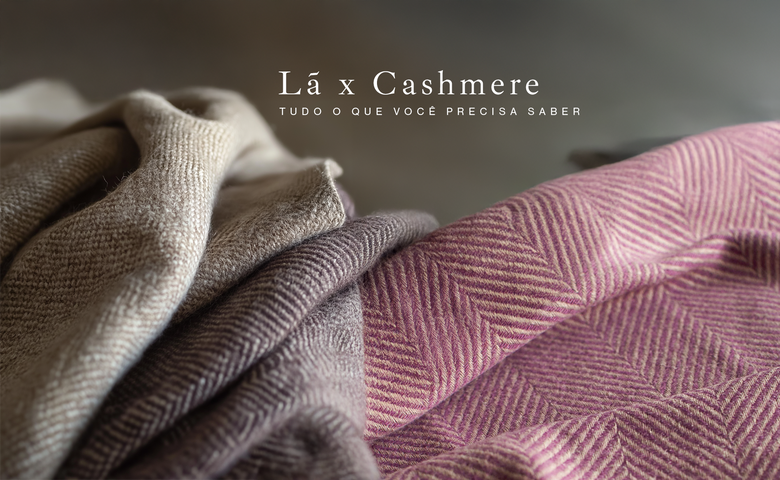Difference Between Wool and Cashmere: What You Need to Know
Find out how these materials compare in terms of quality, warmth and comfort.
Find out how these materials compare in terms of quality, warmth and comfort.

If you’re updating your winter wardrobe, then you need to understand the difference between wool and cashmere. This way, you’ll increase your chances of putting together cozy, stylish, and elegant looks for cold weather.
Wool is a natural fiber that comes from sheep. After shearing, the process includes washing, carding, spinning and weaving to transform the raw wool into usable yarn.
Merino wool stands out as the most famous variety, known for its softness and thermal regulation capabilities.
On the other hand, real cashmere comes from goats from Kashmir, a region between India, Pakistan and China. The production process is more delicate, involving the manual collection of the goats' undercoat during the spring.
This meticulous collection is what gives cashmere its unique characteristics of softness and lightness.

Wool fiber is known for being strong and elastic. Varieties like merino wool have fine, soft fibers that are ideal for high-performance clothing and everyday wear. The structure of wool helps it retain heat, making it an excellent choice for cold climates.
Cashmere, on the other hand, is much finer and lighter than regular wool. Cashmere fibers are incredibly soft to the touch and provide an unparalleled sense of luxury.
This softness remains even over time, which is one of the reasons why cashmere is so highly valued. It is no wonder that a piece made from this noble fabric can be passed down from generation to generation.
Wool is famous for its thermal insulation properties. It retains body heat, keeping you warm even in freezing temperatures. It is also naturally water-resistant, making it ideal for a variety of weather conditions.
Cashmere has a superior heat retention capacity to wool. This is due to its fine fiber structure that creates insulating air pockets, keeping body heat close to the skin. This means that a cashmere garment can be lighter and still warmer than a wool garment.
Wool is quite durable and can withstand daily wear and tear. It can be hand-washed, machine-washed, or dry-cleaned, depending on the type of wool and the garment. However, it can lose its shape if not cared for properly.
Cashmere, on the other hand, is more delicate and requires specific care to maintain its beauty and softness. The pieces should be hand washed with a mild detergent and dried on a flat surface, away from direct sunlight. Another tip is to store cashmere in breathable fabric bags to preserve its qualities.
Wool is extremely versatile. It is used in sweaters, coats, scarves, blankets and many other items. Its insulating properties make it ideal for winter clothing and accessories that require strength and durability.
Cashmere is used in pashminas, luxury sweaters, scarves and ponchos . Due to its softness and lightness, it is a popular choice for high fashion pieces and items that offer extreme comfort.
Cashmere garments are perfect for special occasions and for those looking for a touch of sophistication in their everyday lives. Off-white cashmere , for example, is a luxurious choice for brides.
Wool is generally more affordable and comes in a variety of varieties and price ranges. This makes it a popular choice for many consumers.
However, real cashmere tends to be more expensive due to its rarity and meticulous production process. Therefore, investing in cashmere pieces is worth it for those looking for quality and durability.
Style: If you’re looking for elegant, luxurious pieces, cashmere is the ideal choice. For a more casual, durable style, opt for wool.
Climate: For extremely cold climates, cashmere offers superior thermal insulation. Wool is more versatile and suitable for a variety of weather conditions.
Cost: If budget is a concern, wool offers more affordable pieces, such as wool pashminas . Cashmere is an investment for those who can afford a luxury.
Advantages: Durable, affordable, versatile.
Disadvantages: May be less soft and more voluminous.
Advantages: Softness, lightness, superior thermal insulation.
Disadvantages: High cost, need for delicate care.
Understanding the differences between wool and cashmere is essential to choosing the right clothes and accessories. While wool is more durable and ideal for everyday wear, cashmere offers a touch of luxury and unmatched softness.
Now that you know these distinctions, evaluate your needs and preferences before investing in wool or cashmere pieces.🧣🧥
Cart
Select options
Select options